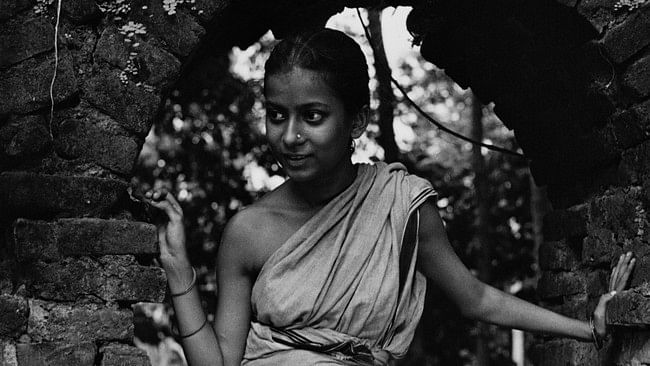
Uma Dasgupta in Pather Panchali.
Credit: Imdb
Uma Dasgupta, who passed away Tuesday at 83, acted for a mere two hours in an Indian movie. But her performance was integral to that movie which marked Indian cinema as a global presence and its maker, Satyajit Ray, as a director of international repute. It was Ray’s genius that made Pather Panchali a classic.
The story, the characters, acting, music, cinematography, locales – all the elements blended so well in what would become an enduring piece of cinematic brilliance. The movie, set in rural Bengal in the early 20th century, narrates the story of a poor family.
It is also the story of its young protagonist, Apu, and his discovery of the world. His elder sister Durga, played by Uma Dasgupta, is his companion in this discovery. Hers was a cameo performance considered by many as one that overshadowed the protagonist’s performance. After her internationally acclaimed debut feature, Uma distanced herself from mainstream cinema and faded away into her own life.
There have been other actors who stepped away from the limelight after their first movie. There are writers known for their only published work.
In history, men and women have had their big, defining moments and then disappeared.
Uma delivered a performance that in many ways defined a shift in sensibilities in Indian cinema. Her looks, expressions, movements, and comportment are all remembered in minute detail.
That is the privilege of an actor – a look, gait, or even a twitch of the lips can get etched into the mind of the viewer, to recall and revisit. Uma connected with generations of viewers with her performance, sitting or running, laughing or crying, or with words and silence.
She created an endearing personal image – humane and loving, funny and frolicking, happy and sad, caring, and even reflective. She might even be remembered just for the scene where Durga and Apu see a train for the first time.
Why did Uma choose to end her film career with Durga? Did she think that she could not better Durga in any other character? Or was she the quintessential Durga in her life, limited by herself, and couldn’t have lived the life of any other character, even if she chose to? The world doesn’t quite know the person behind Durga, the Uma who lived her own life. But would that matter?
She would have known that Durga, whose life and death she lived, would outlive her to find new audiences, and would even be truer than herself. When the rain took Durga away, the story she enacted had a poignant ending and the song of the road stopped, but it also marked the beginning of a legend that still lives.